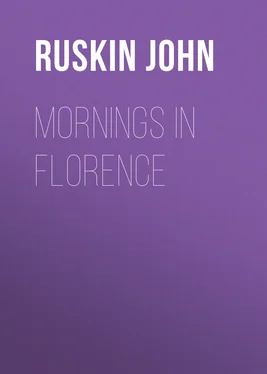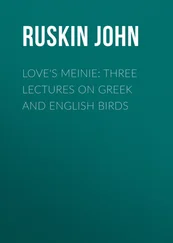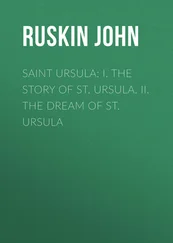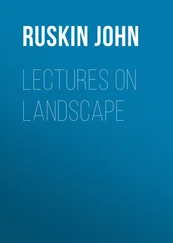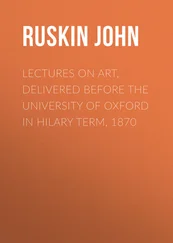John Ruskin - Mornings in Florence
Здесь есть возможность читать онлайн «John Ruskin - Mornings in Florence» — ознакомительный отрывок электронной книги совершенно бесплатно, а после прочтения отрывка купить полную версию. В некоторых случаях можно слушать аудио, скачать через торрент в формате fb2 и присутствует краткое содержание. Жанр: foreign_antique, foreign_home, literature_19, visual_arts, на английском языке. Описание произведения, (предисловие) а так же отзывы посетителей доступны на портале библиотеки ЛибКат.
- Название:Mornings in Florence
- Автор:
- Жанр:
- Год:неизвестен
- ISBN:нет данных
- Рейтинг книги:4 / 5. Голосов: 1
-
Избранное:Добавить в избранное
- Отзывы:
-
Ваша оценка:
- 80
- 1
- 2
- 3
- 4
- 5
Mornings in Florence: краткое содержание, описание и аннотация
Предлагаем к чтению аннотацию, описание, краткое содержание или предисловие (зависит от того, что написал сам автор книги «Mornings in Florence»). Если вы не нашли необходимую информацию о книге — напишите в комментариях, мы постараемся отыскать её.
Mornings in Florence — читать онлайн ознакомительный отрывок
Ниже представлен текст книги, разбитый по страницам. Система сохранения места последней прочитанной страницы, позволяет с удобством читать онлайн бесплатно книгу «Mornings in Florence», без необходимости каждый раз заново искать на чём Вы остановились. Поставьте закладку, и сможете в любой момент перейти на страницу, на которой закончили чтение.
Интервал:
Закладка:
And they did this most effectually by using the form of the letter T, that of the Furca or Gibbet,—not the sign of peace.
Also, their churches were meant for use; not show, nor self-glorification, nor town-glorification. They wanted places for preaching, prayer, sacrifice, burial; and had no intention of showing how high they could build towers, or how widely they could arch vaults. Strong walls, and the roof of a barn,—these your Franciscan asks of his Arnolfo. These Arnolfo gives,—thoroughly and wisely built; the successions of gable roof being a new device for strength, much praised in its day.
This stern humor did not last long. Arnolfo himself had other notions; much more Cimabue and Giotto; most of all, Nature and Heaven. Something else had to be taught about Christ than that He was wounded to death. Nevertheless, look how grand this stern form would be, restored to its simplicity. It is not the old church which is in itself unimpressive. It is the old church defaced by Vasari, by Michael Angelo, and by modern Florence. See those huge tombs on your right hand and left, at the sides of the aisles, with their alternate gable and round tops, and their paltriest of all possible sculpture, trying to be grand by bigness, and pathetic by expense. Tear them all down in your imagination; fancy the vast hall with its massive pillars,—not painted calomel-pill colour, as now, but of their native stone, with a rough, true wood for roof,—and a people praying beneath them, strong in abiding, and pure in life, as their rocks and olive forests That was Arnolfo's Santa Croce. Nor did his work remain long without grace.
That very line of chapels in which we found our St. Louis shows signs of change in temper. They have no pent-house roofs, but true Gothic vaults: we found our four-square type of Franciscan Law on one of them.
It is probable, then, that these chapels may be later than the rest—even in their stonework. In their decoration, they are so, assuredly; belonging already to the time when the story of St. Francis was becoming a passionate tradition, told and painted everywhere with delight.
And that high recess, taking the place of apse, in the centre,—see how noble it is in the coloured shade surrounding and joining the glow of its windows, though their form be so simple. You are not to be amused here by patterns in balanced stone, as a French or English architect would amuse you, says Arnolfo. "You are to read and think, under these severe walls of mine; immortal hands will write upon them." We will go back, therefore, into this line of manuscript chapels presently; but first, look at the two sepulchral slabs by which you are standing. That farther of the two from the west end is one of the most beautiful pieces of fourteenth century sculpture in this world; and it contains simple elements of excellence, by your understanding of which you may test your power of understanding the more difficult ones you will have to deal with presently.
It represents an old man, in the high deeply-folded cap worn by scholars and gentlemen in Florence from 1300—1500, lying dead, with a book in his breast, over which his hands are folded. At his feet is this inscription: "Temporibus hic suis phylosophye atq. medicine culmen fuit Galileus de Galileis olim Bonajutis qui etiam summo in magistratu miro quodam modo rempublicam dilexit, cujus sancte memorie bene acte vite pie benedictus filius hunc tumulum patri sibi suisq. posteris edidit."
Mr. Murray tells you that the effigies "in low relief" (alas, yes, low enough now—worn mostly into flat stones, with a trace only of the deeper lines left, but originally in very bold relief,) with which the floor of Santa Croce is inlaid, of which this by which you stand is characteristic, are "interesting from the costume," but that, "except in the case of John Ketterick, Bishop of St. David's, few of the other names have any interest beyond the walls of Florence." As, however, you are at present within the walls of Florence, you may perhaps condescend to take some interest in this ancestor or relation of the Galileo whom Florence indeed left to be externally interesting, and would not allow to enter in her walls. 4 4 "Seven years a prisoner at the city gate, Let in but his grave-clothes." Rogers' "Italy."
I am not sure if I rightly place or construe the phrase in the above inscription, "cujus sancte memorie bene acte;" but, in main purport, the legend runs thus: "This Galileo of the Galilei was, in his times, the head of philosophy and medicine; who also in the highest magistracy loved the republic marvellously; whose son, blessed in inheritance of his holy memory and well-passed and pious life, appointed this tomb for his father, for himself, and for his posterity."
There is no date; but the slab immediately behind it, nearer the western door, is of the same style, but of later and inferior work, and bears date—I forget now of what early year in the fifteenth century.
But Florence was still in her pride; and you may observe, in this epitaph, on what it was based. That her philosophy was studied together with useful arts, and as a part of them; that the masters in these became naturally the masters in public affairs; that in such magistracy, they loved the State, and neither cringed to it nor robbed it; that the sons honoured their fathers, and received their fathers' honour as the most blessed inheritance. Remember the phrase "vite pie bene dictus filius," to be compared with the "nos nequiores" of the declining days of all states,—chiefly now in Florence, France and England.
Thus much for the local interest of name. Next for the universal interest of the art of this tomb.
It is the crowning virtue of all great art that, however little is left of it by the injuries of time, that little will be lovely. As long as you can see anything, you can see—almost all;—so much the hand of the master will suggest of his soul.
And here you are well quit, for once, of restoration. No one cares for this sculpture; and if Florence would only thus put all her old sculpture and painting under her feet, and simply use them for gravestones and oilcloth, she would be more merciful to them than she is now. Here, at least, what little is left is true.
And, if you look long, you will find it is not so little. That worn face is still a perfect portrait of the old man, though like one struck out at a venture, with a few rough touches of a master's chisel. And that falling drapery of his cap is, in its few lines, faultless, and subtle beyond description.
And now, here is a simple but most useful test of your capacity for understanding Florentine sculpture or painting. If you can see that the lines of that cap are both right, and lovely; that the choice of the folds is exquisite in its ornamental relations of line; and that the softness and ease of them is complete,—though only sketched with a few dark touches,—then you can understand Giotto's drawing, and Botticelli's;—Donatello's carving and Luca's. But if you see nothing in this sculpture, you will see nothing in theirs, of theirs. Where they choose to imitate flesh, or silk, or to play any vulgar modern trick with marble—(and they often do)—whatever, in a word, is French, or American, or Cockney, in their work, you can see; but what is Florentine, and for ever great—unless you can see also the beauty of this old man in his citizen's cap,—you will see never.
There is more in this sculpture, however, than its simple portraiture and noble drapery. The old man lies on a piece of embroidered carpet; and, protected by the higher relief, many of the finer lines of this are almost uninjured; in particular, its exquisitely-wrought fringe and tassels are nearly perfect. And if you will kneel down and look long at the tassels of the cushion under the head, and the way they fill the angles of the stone, you will,—or may—know, from this example alone, what noble decorative sculpture is, and was, and must be, from the days of earliest Greece to those of latest Italy.
Читать дальшеИнтервал:
Закладка:
Похожие книги на «Mornings in Florence»
Представляем Вашему вниманию похожие книги на «Mornings in Florence» списком для выбора. Мы отобрали схожую по названию и смыслу литературу в надежде предоставить читателям больше вариантов отыскать новые, интересные, ещё непрочитанные произведения.
Обсуждение, отзывы о книге «Mornings in Florence» и просто собственные мнения читателей. Оставьте ваши комментарии, напишите, что Вы думаете о произведении, его смысле или главных героях. Укажите что конкретно понравилось, а что нет, и почему Вы так считаете.
